Nutrition Research
-
Macronutrients
-
Micronutrients
-
Dietary Factors
-
Food & Beverages
Summary
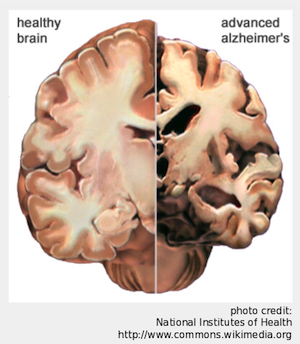
Several nutrients have essential functions in the nervous system, participating in energy metabolism, neurotransmitter synthesis, and antioxidant defense. Patients with Alzheimer’s disease (AD) tend to have low levels of these nutrients in their blood and cerebrospinal fluid (CSF), which is thought to reflect the nutritional status of the brain. It is unclear if this low nutrient status is a consequence of AD progression, poor diet quality associated with cognitive decline, or if it is a causative factor in disease onset and progression. In any case, increased intake of nutrients important for nervous system function is being tested as a strategy to influence the development and symptoms of AD. Overall, nutrient supplementation in AD patients successfully increases nutrient levels in the CSF but has shown no beneficial effects in the clinical course of the disease. For vitamin C, vitamin E, and essential fatty acids, a beneficial effect of nutrient supplementation to prevent or delay the progression of AD may depend on the presence of vascular risk factors, an existing nutrient deficiency, or a certain genetic predisposition.
Disease Overview
Alzheimer’s disease is the most common cause of dementia in older adults. At early stages of Alzheimer’s disease, before symptoms are present, accumulation of abnormal protein deposits (called amyloid plaques) and tangles of fibers (called neurofibrillary tangles) cause nerve cells in the brain to work less efficiently. Over time, affected nerve cells become damaged, completely lose their function, and die. The regions of the brain that they access begin to shrink.
The protein deposits and tangles that characterize Alzheimer’s disease tend to begin in areas of the brain important for learning and memory. Although the rate of progression varies from person to person, damage spreads in a predictable pattern to other regions of the brain, eventually affecting many cognitive, behavioral, and vital body functions.
At this time, there is no cure for Alzheimer's disease. However, scientists are researching ways in which nutrients influence Alzheimer’s disease prevention and treatment. See below for specific information about nutrients and dietary factors relevant to Alzheimer's disease.
DEFINITIONS
Alzheimer’s disease – a disease characterized by abnormal clumping and tangles of proteins in the brain, thus interfering with nerve cell function
Dementia – a loss of cognitive and behavioral abilities to an extent that interferes with daily life
Cognition – the mental process of thought; includes brain functions like attention, memory, planning, developing strategies, and problem solving
Cognitive decline – a general term that describes any loss of cognition; it could refer to a decline in any of the different types of thought processes listed above
Nutrition Research
DEFINITIONS
Test tube (in vitro) experiment - a research experiment performed in a test tube, culture dish, or other artificial environment outside of a living organism; in vitro is a Latin phrase meaning in glass
Animal experiment - a research experiment performed in a laboratory animal; many different animal species are studied in the laboratory, including terrestrial (land), aquatic (water), and microscopic animals
Observational study - a human research study in which no experimental intervention or treatment is applied, and participants are simply observed over time
Randomized controlled trial - a human research study in which participants are assigned by chance alone to receive either an experimental agent (the treatment group) or a placebo (the control group)
Placebo - a chemically inactive substance
Essential Fatty Acids
What they do
General
-
Essential fatty acids (EFAs) are a type of polyunsaturated fatty acid that must be obtained from the diet.
-
EFAs are structural components of every cell in the body, are converted to compounds that influence inflammation and immunity, and serve as an important source of energy.
Alzheimer’s-specific
-
The long-chain omega-3 polyunsaturated fatty acids, eicosapentaenoic acid (EPA) and docosahexaenoic acid (DHA), may protect the brain by reducing inflammation, improving blood flow, and reducing abnormal clumping of the protein β-amyloid.
What we know
-
Evidence from observational studies suggests a role for diets rich in long-chain omega-3 polyunsaturated fatty acids (from fatty fish) in slowing cognitive decline.
-
Higher intakes of fish and omega-3 polyunsaturated fatty acids are linked to slower rates of memory decline and overall cognitive decline in older adults.
-
Low dietary intake of DHA from fish is associated with a higher risk of developing dementia or Alzheimer’s disease.
-
Randomized controlled trials testing the effect of long-chain omega-3 polyunsaturated fatty acids on cognitive decline or dementia have reported mixed results.
-
Limited evidence suggests that long-chain omega-3 supplementation may have positive effects on measures of cognitive function in adults with normal or mildly impaired cognition.
-
A few trials showed no beneficial effect of omega-3 supplementation in the treatment of Alzheimer’s disease.
-
A beneficial effect of omega-3 supplements may depend on accompanying conditions, such as the involvement of a vascular issue or having a certain genetic predisposition (the presence of apolipoprotein epsilon 4 [APOE ε4]).
HIGHLIGHT
The apolipoprotein E (APOE) gene produces a protein involved in transporting and delivering lipids through the bloodstream. At least three slightly different versions of APOE occur in the population. Those who inherit one particular version of APOE, called apolipoprotein E epsilon 4 (APOE ε4), have an increased risk of developing Alzheimer's disease.
For references and more information, see the section on Cognitive decline and Alzheimer’s disease in the Essential Fatty Acids article.
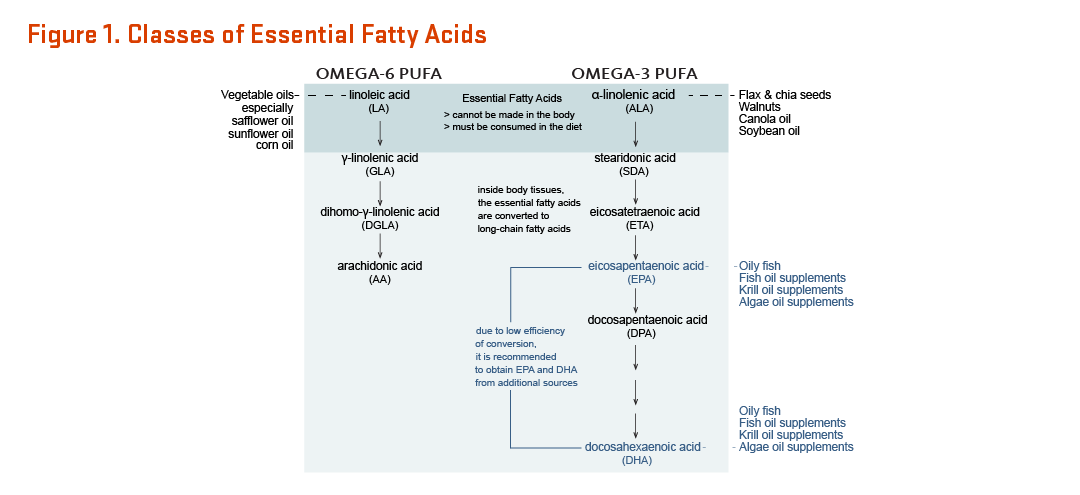
[Click to Enlarge]

Choline
What it does
General
-
Humans can synthesize small amounts of choline but not enough to support health. Therefore, choline must be consumed in the diet and is considered an essential nutrient.
-
Choline functions as a vital structural component of cell membranes and some proteins.
Alzheimer’s-specific
-
Alzheimer’s disease has been associated with low levels of the neurotransmitter acetylcholine. Because choline is a precursor to acetylcholine, scientists have tested if choline supplements can increase acetylcholine levels in the brains of Alzheimer’s patients.
What we know
-
Overall, randomized controlled trials that tested supplementation with large doses of lecithin (a source of choline) have shown no effect of lecithin on measures of cognitive function in Alzheimer’s disease patients.
-
It is not known whether citicoline (a choline derivative) might improve cognitive performance in Alzheimer’s disease patients.
For references and more information, see the section on Neurodegenerative diseases in the Choline article.
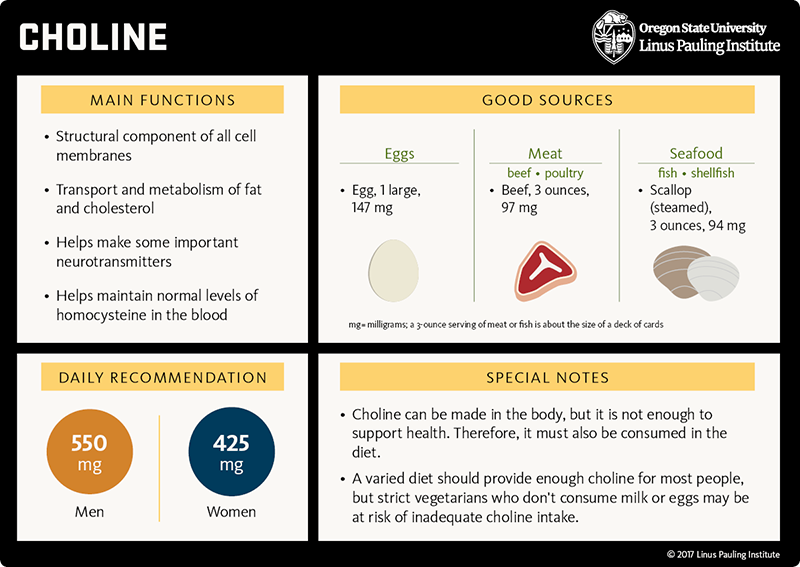
[Download PDF]

Copper
What it does
General
-
Copper is an essential trace mineral that assists in energy production, iron utilization, antioxidant defense, and the synthesis of neurotransmitters and connective tissue.
Alzheimer’s-specific
-
Copper is normally bound to proteins in the blood; high blood levels of unbound copper have been found in Alzheimer’s patients.
-
Exposure to high levels of unbound copper may contribute to metal accumulation in sensitive areas of the brain, oxidative stress, plaque formation, and damage to nervous tissue.
-
Variations in a gene called ATP7B have been associated with copper imbalance and Alzheimer’s disease.
What we know
-
Observational studies suggest that a diet that is high in both copper and high in saturated and trans fats may foster cognitive decline in older individuals.
-
The role of copper in the development and progression of Alzheimer’s disease is unclear at this time; copper imbalance in the body may rather be caused by the disease. There is limited evidence that either copper or zinc supplementation could stabilize some features of Alzheimer’s disease.
-
The complicated relationship between copper and Alzheimer’s disease is an area of active research.
For references and more information, see the section on Neurodegenerative diseases in the Copper article.
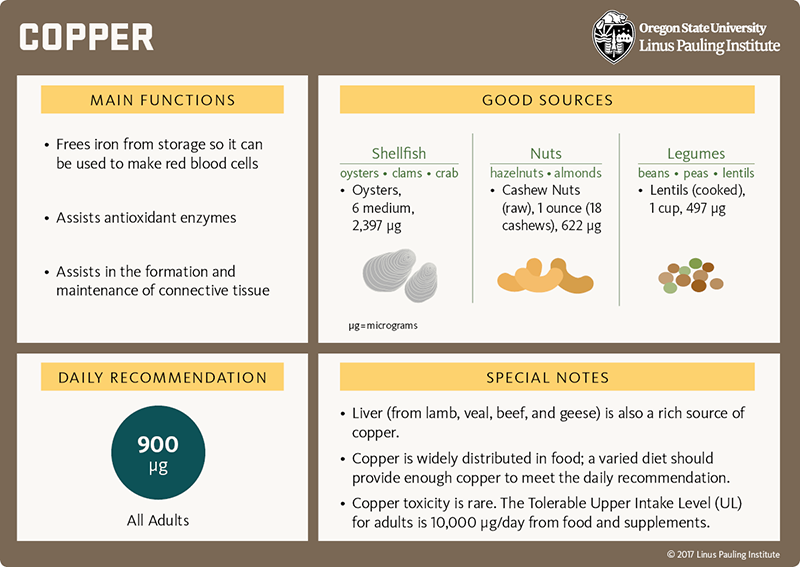
[Download PDF]

Folate
What it does
General
-
Folate is a B-vitamin required for DNA synthesis and the formation of new cells. Folate therefore supports the growth and repair of all tissues in the body, including nerve and brain tissue.
-
Additionally, the B-vitamins folate, vitamin B12, and vitamin B6 work together to convert homocysteine to methionine, an amino acid used in countless essential cellular activities.
Alzheimer’s-specific
-
Folate deficiency may lead to decreased synthesis of methionine and the accumulation of homocysteine. Too much homocysteine in the blood is associated with an increased risk of developing Alzheimer’s disease.
What we know
-
Long-term folate deficiency is associated with an increased risk of developing Alzheimer’s disease.
-
Although folic acid supplementation improves folate status and lowers blood homocysteine levels, it is not known whether it results in any long-term cognitive benefits, including with respect to Alzheimer’s disease.
For references and more information, see the section on Alzheimer’s disease and cognitive impairment in the Folate article.
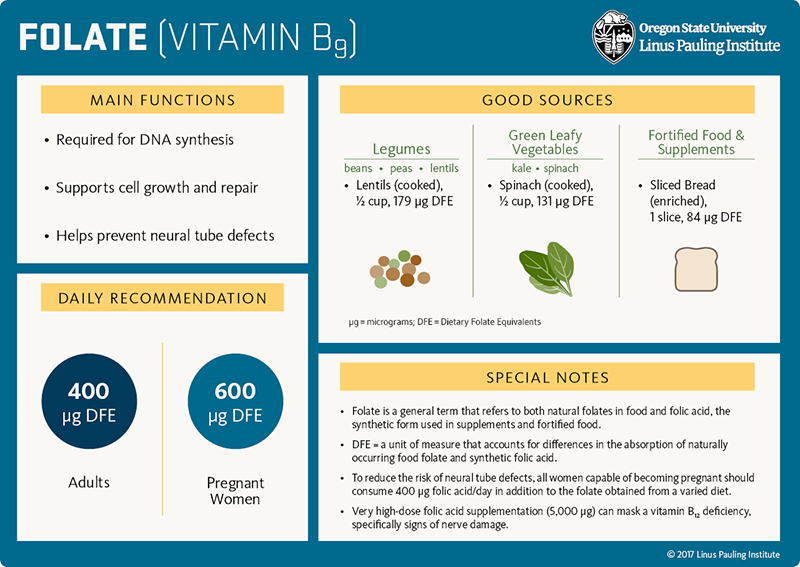
[Download PDF]

Iron
What it does
General
-
Iron, an essential trace mineral, is required for the synthesis of hundreds of vital molecules, facilitates oxygen transport and storage, and assists antioxidant enzymes.
Alzheimer’s-specific
-
Abnormal iron accumulation and accompanying oxidative injury in the brain may contribute to the development of a number of neurodegenerative diseases, including Alzheimer's disease.
What we know
-
The abnormal accumulation of iron in the brain does not appear to be a result of increased dietary iron, but rather, a disruption in the complex process of cellular iron regulation.
HIGHLIGHT
Although dietary iron consumption does not influence the development of Alzheimer’s disease, the requirement for iron goes down with age. The recommended dietary allowance (RDA) for men ≥19 years of age and women ≥51 years of age is 8 milligrams (mg) per day. It is recommended that men and postmenopausal women avoid dietary supplements containing iron.
For references and more information, see the section on Iron overload in the Iron article.
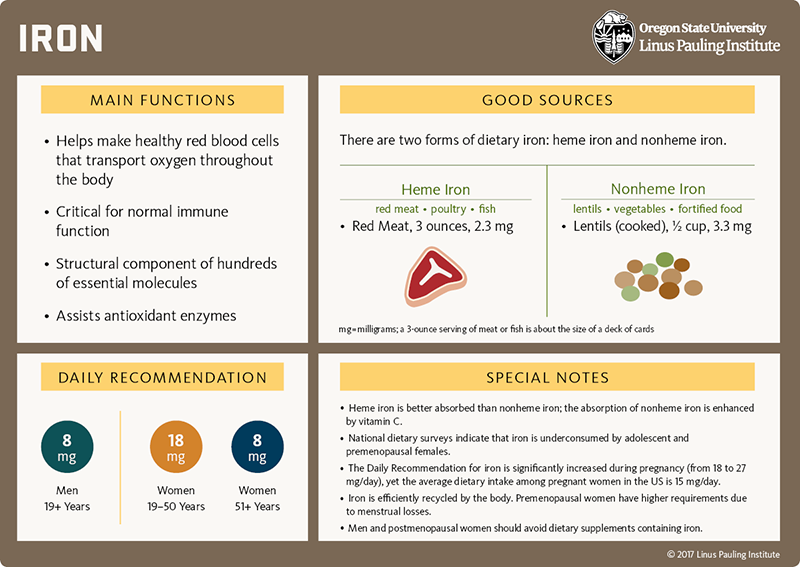
[Download PDF]

Thiamin
What it does
General
-
Thiamin is a B-vitamin that helps convert food into useable energy.
-
More specifically, thiamin functions as an essential assistant to enzymes involved in glucose and amino acid metabolism.
Alzheimer’s-specific
-
Nerve tissue relies heavily on glucose as a fuel source. Thiamin deficiency compromises glucose metabolism in nerve cells, which can contribute to nerve cell death in certain vulnerable regions of the brain. Scientists are therefore investigating if thiamin deficiency is also connected to Alzheimer’s disease.
What we know
-
Test tube and animal experiments indicate that thiamin deficiency increases β-amyloid production and plaque formation, which are subsequently reversed following thiamin supplementation.
-
A limited number of observational studies in humans show that thiamin status and thiamin-dependent enzymatic activity is reduced in individuals with Alzheimer’s disease.
-
Randomized controlled trials of thiamin supplementation in Alzheimer’s patients found no evidence that thiamin was a useful treatment for symptoms of Alzheimer's disease.
For references and more information, see the section on Alzheimer’s disease in the Thiamin article.
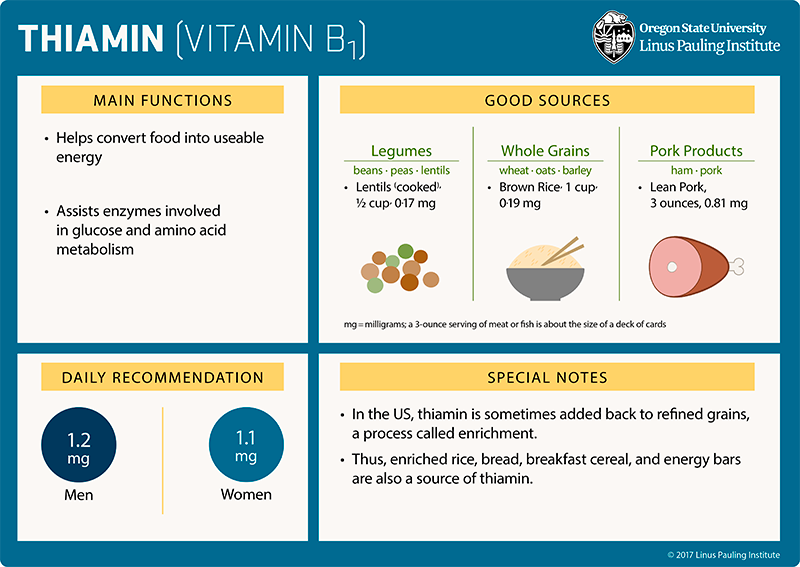
[Download PDF]

Vitamin B6
What it does
General
-
Vitamin B6 helps convert food into useable energy and assists in the formation of neurotransmitters, red blood cells, and building blocks of DNA.
-
Additionally, the B-vitamins folate, vitamin B12, and vitamin B6 work together to maintain normal levels of homocysteine.
Alzheimer’s-specific
-
Vitamin B6 deficiency may lead to the accumulation of homocysteine. Too much homocysteine in the blood is associated with an increased risk of developing Alzheimer’s disease.
What we know
-
Low blood concentrations of vitamin B6, vitamin B12, and folate have been found in Alzheimer’s patients.
-
Although high-dose supplementation with vitamin B6, vitamin B12, and folic acid lowers blood homocysteine concentration, it appears to have no effect on cognitive decline in Alzheimer’s patients.
For references and more information, see the section on Cognitive decline and Alzheimer’s disease in the Vitamin B6 article.
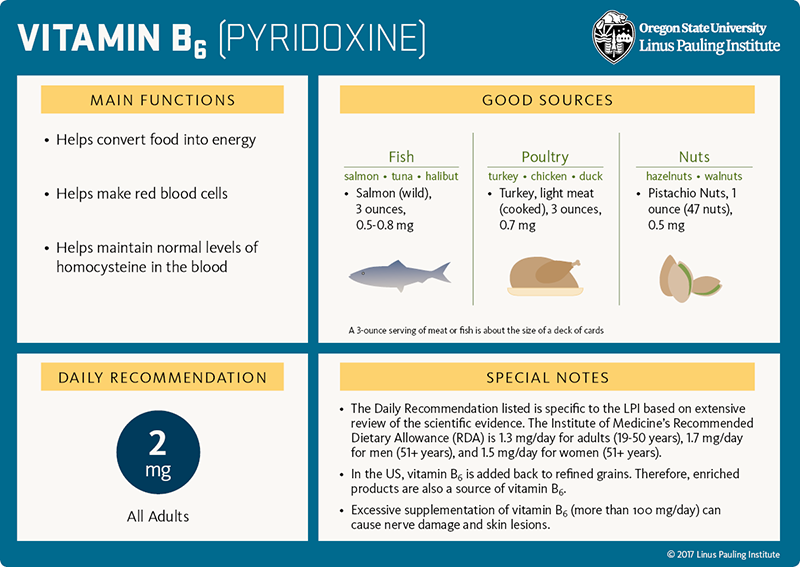
[Download PDF]

Vitamin B12
What it does
General
-
Vitamin B12 helps convert food into useable energy, helps make red blood cells, and is required for proper nerve function.
-
Additionally, the B-vitamins folate, vitamin B12, and vitamin B6 work together to maintain normal blood levels of homocysteine.
Alzheimer’s-specific
-
Vitamin B12 deficiency may lead to the accumulation of homocysteine. Too much homocysteine in the blood is associated with an increased risk of developing Alzheimer’s disease.
What we know
-
Low concentrations of vitamin B12 in cerebrospinal fluid (CSF) and high concentrations of homocysteine in blood have been found in patients with Alzheimer's disease.
-
Some evidence suggests that B-vitamin (vitamin B12, vitamin B6, and folic acid) supplementation reduces the rate of atrophy in regions of the brain affected by Alzheimer’s disease. However, brain atrophy also occurs with normal aging and other types of dementia, thus it is unclear if vitamin B12 supplementation will influence the development of Alzheimer’s disease specifically.
-
Although high-dose supplementation with vitamin B6, vitamin B12, and folic acid lowers homocysteine concentration in the blood and CSF, the long-term benefit to Alzheimer’s patients is not yet known.
For references and more information, see the section on Cognitive decline, dementia, and Alzheimer’s disease in the Vitamin B12 article.
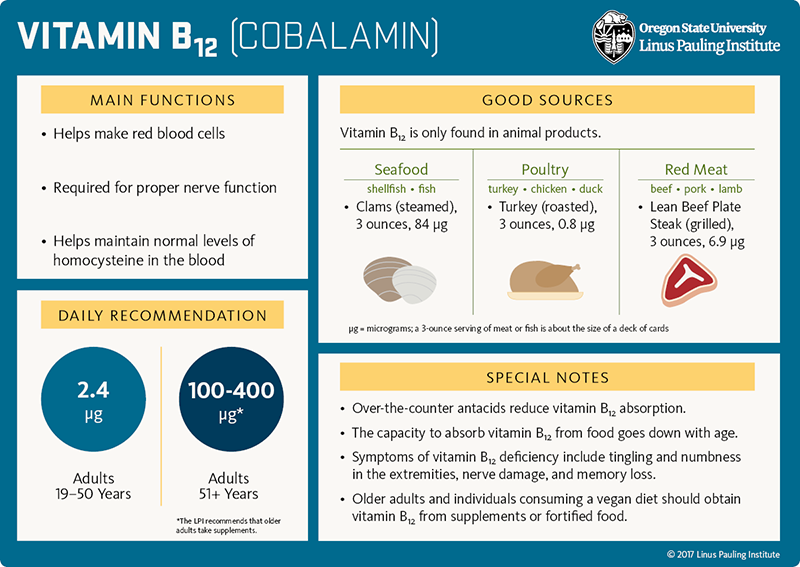
[Download PDF]

Vitamin C
What it does
General
-
Vitamin C (ascorbic acid) is a water-soluble vitamin that neutralizes a variety of reactive oxygen species and recycles important cellular antioxidants.
-
Vitamin C is also a cofactor in numerous enzymatic reactions involved in the making of collagen, L-carnitine, and several neurotransmitters, and in the regulation of gene expression.
Alzheimer’s-specific
-
Oxidative stress is thought to be an early causative event in the onset of various neurodegenerative diseases, including Alzheimer’s disease. Therefore, ensuring adequate antioxidant defense is being investigated as a strategy to reduce the risk of Alzheimer’s disease onset and progression.
What we know
-
Vitamin C is concentrated in the brain, but whether it influences cognitive function in humans is not yet known.
-
Vitamin C administration in animal models of Alzheimer's disease could delay amyloid plaque formation.
-
Higher plasma vitamin C concentrations are generally associated with better cognitive function and lower risk of cognitive decline.
-
The few, small randomized controlled trials that tested vitamin C supplementation (given in conjunction with other antioxidants or medications) in Alzheimer’s patients report an increase in antioxidant blood capacity but no beneficial effect on the clinical course of the disease.
-
Benefits from vitamin C supplementation may depend on the presence of vascular risk factors or an existing vitamin C deficiency.
DEFINITIONS
Reactive oxygen species (ROS) - highly unstable oxygen-containing compounds that react easily with nearby cellular structures, potentially causing damage
Oxidative stress - a situation in which the production of reactive oxygen species exceeds the ability of an organism to eliminate or neutralize them
Antioxidants - compounds that prevent or repair the damage caused by reactive oxygen species
For references and more information, see the section on Alzheimer’s disease in the Vitamin C article.
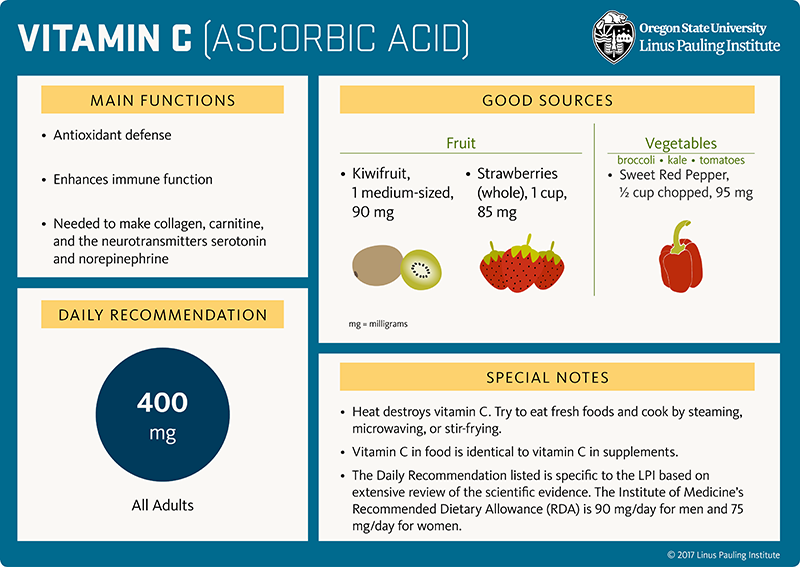
[Download PDF]

Vitamin E
What it does
General
-
Vitamin E functions as an antioxidant in lipid (fat) environments and enhances the activity of immune cells.
Alzheimer’s-specific
-
Vitamin E is an important antioxidant nutrient in the brain, where it functions to protect nerve and brain tissue from oxidative damage.
What we know
-
Some studies have found low concentrations of vitamin E in the cerebrospinal fluid of patients with Alzheimer's disease.
-
Randomized controlled trials have reported mixed results. While one study found that high-dose supplementation of vitamin E (2,000 IU [800 mg] of RRR-α-tocopherol per day) reduced cognitive decline in Alzheimer’s patients, another similar study found no effect.
DEFINITIONS
Antioxidants - compounds that prevent or repair the damage caused by reactive oxygen species.
Reactive oxygen species (ROS) - highly unstable oxygen-containing compounds that react easily with nearby cellular structures, potentially causing damage.
Oxidative damage - damage that arises when the production of reactive oxygen species exceeds the ability of an organism to eliminate or neutralize them.
For references and more information, see the section on Cognitive deterioration and Alzheimer’s disease in the Vitamin E article.
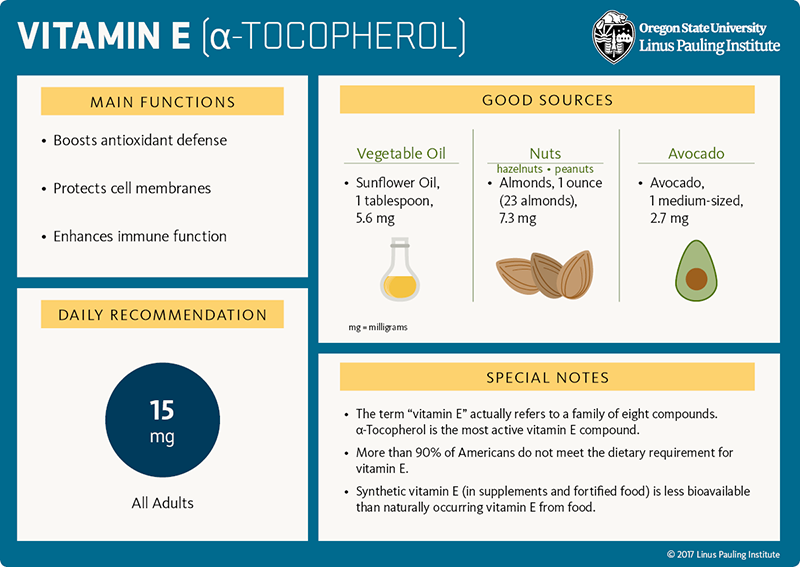
[Download PDF]

L-Carnitine
What it does
General
-
L-Carnitine can be synthesized in the body and obtained from food and dietary supplements. It is considered a conditionally essential nutrient because in some situations, the body’s demand for L-carnitine exceeds its capacity to synthesize it.
-
L-carnitine helps the body convert lipids (fats) into useable energy.
Alzheimer’s-specific
-
The acetyl and carnitine components of acetyl-L-carnitine (ALCAR) have been shown to influence energy metabolism, protein stability and clumping, and nerve transmission in the brain.
What we know
-
Overall, randomized controlled trials on the effect of ALCAR supplementation on the symptoms and progression of Alzheimer’s disease have reported mixed results: either no effect or a small beneficial effect.
-
Pooled analyses have found that ALCAR supplementation (up to 3 g/day) results in some improvement in patients’ global functioning and cognitive performance (attention, memory, and intellectual functions).
For references and more information, see the section on Alzheimer’s disease in the L-Carnitine article.

Curcumin
What it does
General
-
Curcumin is a naturally occurring plant chemical that is abundant in the spice turmeric. Experiments performed in test tubes indicate that curcumin can induce antioxidant, anti-inflammatory, and cellular defense systems.
Alzheimer’s-specific
-
Test tube experiments indicate that curcumin can inhibit abnormal clumping of a protein called β-amyloid, an early feature of Alzheimer’s disease.
-
Animal experiments indicate that dietary curcumin can decrease oxidative stress, inflammation, clumping of β-amyloid, and memory loss.
HIGHLIGHT
Test tube experiments are performed on isolated cells, grown in a laboratory, that are exposed to high concentrations of a test compound. It is important to keep in mind that test tube and animal experiments provide valuable information but differ from human trials in many ways. The outcome may differ for humans ingesting dietary or supplemental versions of the experimental agent.
What we know
-
Although there is little evidence from human studies, one six-month long randomized controlled trial in Alzheimer’s patients showed that curcumin had no effect on cognitive performance or inflammatory biomarkers compared to placebo.
-
A lack of clinical effect may be due to the low bioavailability of oral curcumin. In other words, due to break-down by the gastrointestinal tract and liver, very little dietary curcumin reaches nerve cells in the brain.
DEFINITION
Bioavailability - the fraction of ingested compound that reaches the circulation and is transported to the site of action
For references and more information, see the section on Alzheimer’s disease in the Curcumin article.

Alcoholic Beverages
What they do
General
-
Alcoholic beverages contain ethanol and other ingredients with bioactive properties that may benefit health.
-
When consumed in moderation (no more than two drinks/day for men and one drink/day for women), alcoholic beverages have been associated with beneficial effects in the cardiovascular system.
Alzheimer’s-specific
-
There is some overlap in the neurological systems affected by ethanol and Alzheimer’s disease. Both lead to a reduction in levels of the neurotransmitter acetylcholine as well as the receptors that bind and mediate its important actions.
What we know
-
Alcoholism and heavy alcohol consumption (more than three to four drinks/day) increase the risk of cognitive impairment and dementia.
-
Light-to-moderate alcohol consumption in older adults may be associated with a decreased risk of dementia and Alzheimer’s disease when compared to abstention.
-
There is some evidence that genetic predisposition (the presence of apolipoprotein E epsilon 4 [APOE ε4]) modifies the effect of moderate alcohol consumption on the risk of dementia and Alzheimer’s disease. However, it is unclear at this time if APOE ε4 helps or hinders the association between alcohol and Alzheimer’s disease; research is ongoing.
HIGHLIGHT
The apolipoprotein E (APOE) gene produces a protein involved in transporting and delivering lipids through the bloodstream. At least three slightly different versions of APOE occur in the population. Those who inherit one particular version of APOE, called apolipoprotein E epsilon 4 (APOE ε4), have an increased risk of developing Alzheimer’s disease.
For references and more information, see the section on Cognitive decline, dementia, and Alzheimer’s disease in the Alcoholic Beverages article.
Additional references

